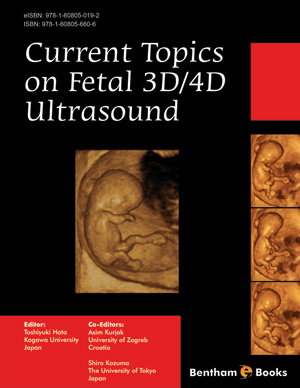Abstract
Transvaginal 2D and 3D allow the detection of about 65-75% first trimester malformations. The normal embryonic weekly ultrasound timetable is summarized and compared with the appearance of morphologic and hemodynamic markers of fetal wellbeing and of chromosomopathies located either in the embryo/fetus, in the adnexae and in the amniotic fluid. Special attention is paid to: the nasal bone, the nuchal translucency, the fronotmaxillary, mandibulomaxillary angles, mid-face hypoplasia and iniencephaly a letal defect of the neuropore. All abdominal wall defects which appear the the early 14th weeks are showing, including the most infrequents as ectopia cordis, bladder and cloacal exstrophy and Cantrell pentalogy. Urinary tract malformations, 40-50% of all the prenatally detected malformations, can also partially visualize early in pregnancy. The following hemodynamic embryonic markers are described: subchorionic flow, cardiac rhythm umbilical cord and fetal vascular anomalies. Finally adnexal malformations such as the ones located in the amnion, amniotic fluid and umbilical cord are mentioned.






















